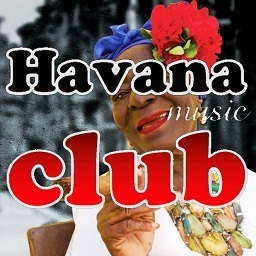North America / USA / New York
Jose Manuel Bello Suazo, better known as José Bello “El Cantautor”, a Dominican artist of international stature with several awards and achievements worldwide.
Jose Bello, born on April 6 in the city of Santo Domingo, who from an early age showed a deep love for music, making his first performances in kindergarten and elementary school. As a teenager, he moved to New York where he met Carlos Castillo, a member of internationally known bands such as Machito y su Orquesta, Joe Cuba y su Sexteto, Tito Rodríguez y su Orquesta. From that moment on, Bello formalized his start in the world of music by forming “El Sexteto Latino” together with Carlos Castillo.

Baila que Baila is known as his first musical recording with maestro Julio Gutiérrez, after that he recorded four record productions with the owners of LA CHARANGA AMERICA. His first full-length album emerged in the 70’s, with the record company “Lo mejor records” with songs of his own inspiration. But, it was in his third record production, where he decides to add songs with a title in another language, entitled “Blue Bossa”
José Bello manages to start his own record label in partnership with Mr. Aldemar Barona, who titled it “B&B Records Presents José Bello”, containing compositions by both members. In the fifth record production, which was established as the owner Jose Bello, El Cantautor, where only the La Salsa Magnate’s own productions are found.
After that, it was decided to record the first DVD recorded live in the city of Medellin, Colombia, becoming known around the world.
In the last 10 years, José Bello has taken his music to all parts of the world, receiving great acceptance from the European, American and Latin American public. Sharing the stage with great personalities such as Celia Cruz, Rubén Blades, Gilberto Santa Rosa, Oscar D’Leon, Marc Anthony, Tito Nieves, among many more.

At International Salsa Magazine, we were able to chat with this incredibly talented artist.
Below is the interview:
How was your first presentation? Did you know after that that music would be your passion?
In the kindergarten of the La miraculous school they had parties and they had a stage where I sang constantly and even had choirs that accompanied me and also acted, since I can remember, my passion is music.
How did you and Carlos Castillo meet? Did you know about his career before?
I met Carlos Castillo, because my mom lived in the house next to him and she talked to Carlos’s mom about me and they both agreed to introduce me, I had no idea who he was, until I met him.
What inspired you to compose those songs?
The experience of life and the gift that I always knew I had to compose, at any time.
|
|
|
|
Tell us a little about Aldemar Barona, what year did you decide to start with the label?
My great friend Aldemar Barona always went to my presentations and when the contract ended with the best record, we decided to make our own record label in the late 80s, early 90s.

Was this performance during a tour? What album were you promoting? Where could that DVD be purchased?
Exclusive record. He hired me to make that DVD in the mid 90s and you could get it online, or at the Musical 90 record store in Jackson Hghts Queens New York
All these artists are well known worldwide and having been able to share stages with them speaks volumes about your incredible talent and career. Which of these artists would you say is your greatest inspiration or example?
As I said before, my inspiration is a divine gift, I love all my colleagues very much, I respect and admire them, some started before me, others are from my generation and others became famous after my love, and I respect music, They have moderated me as I am and have led me to feel fulfilled in what I do, blessed and immensely happy.

Where would you like to present yourself in the next opportunity?
I would like to personally take my art to some countries that I have not visited to this day, such as Mexico, Peru, Panama, Canada, Japan, Chile, and Argentina.
What comes next in the life of José Bello, El Cantautor?
Make my new recording, already as JOSE BELLO EL MAGNATE DE LA SALSA 40 ANIVERSARIO and finish negotiating my next tours, to Central Europe and South America.
Where does his nickname El Magnate de La Salsa come from?
On July 23, 2017, I married the designer Patricia González on the largest luxury yacht in New York called “Infinity”, around 2000 people and with two orchestras. Tito Nieve with his orchestra and my orchestra. The ceremony was on the high seas.

When in Mexico they found out about my marriage, they wrote to congratulate me and told me “Now you are the salsa magnate” I was surprised and asked them why? and they told me “Only Arab Magnates get married on the high seas on a luxury yacht” I liked the idea.
I always hear that in music there are kings, princes, knights, but there are no tycoons and I think that because of the explanation of the Mexicans, I am the tycoon of salsa.




































